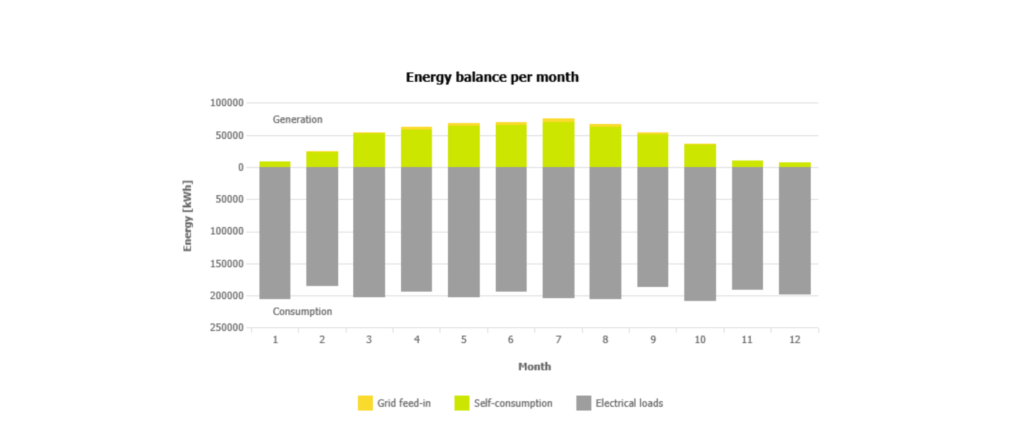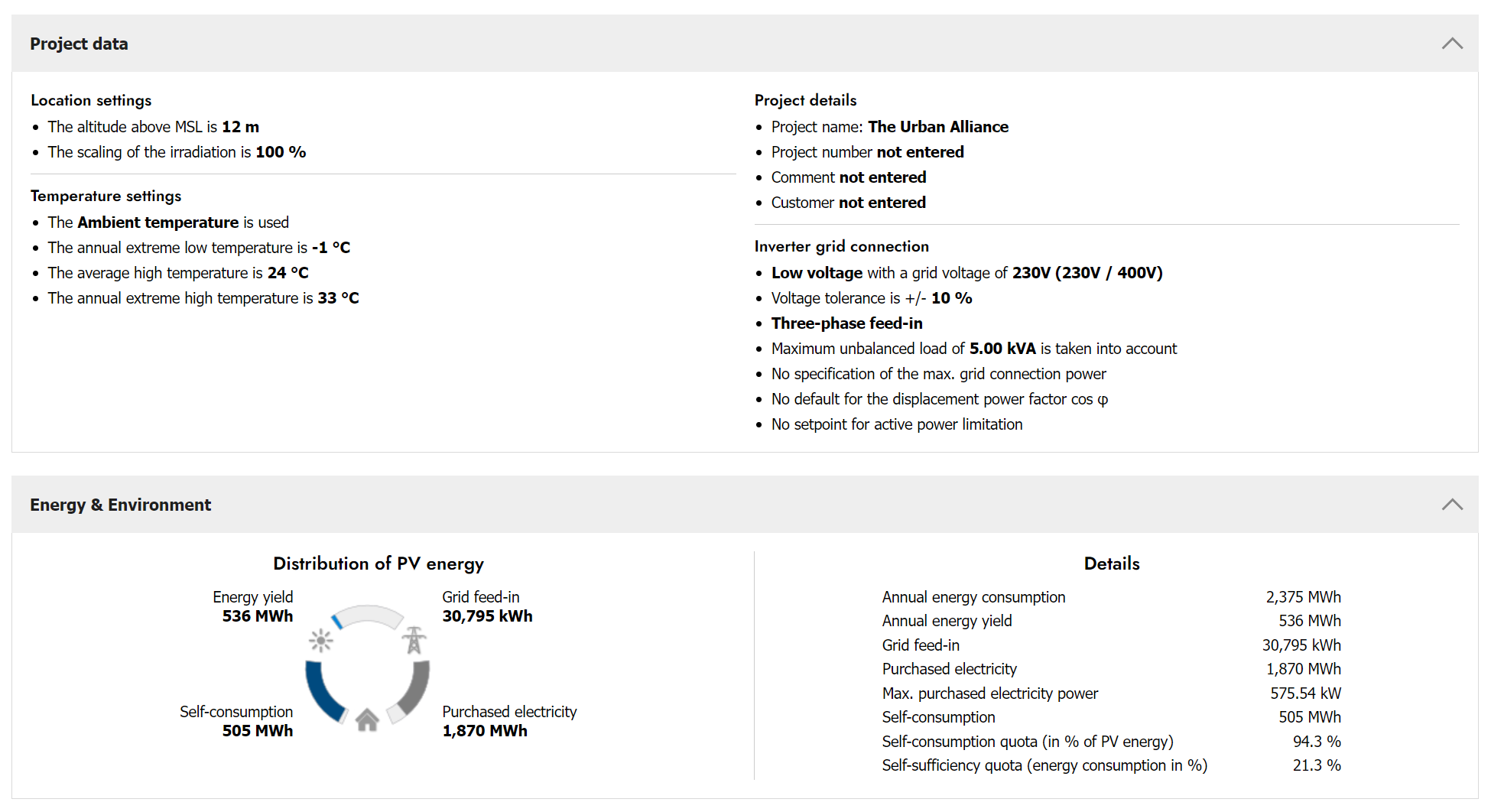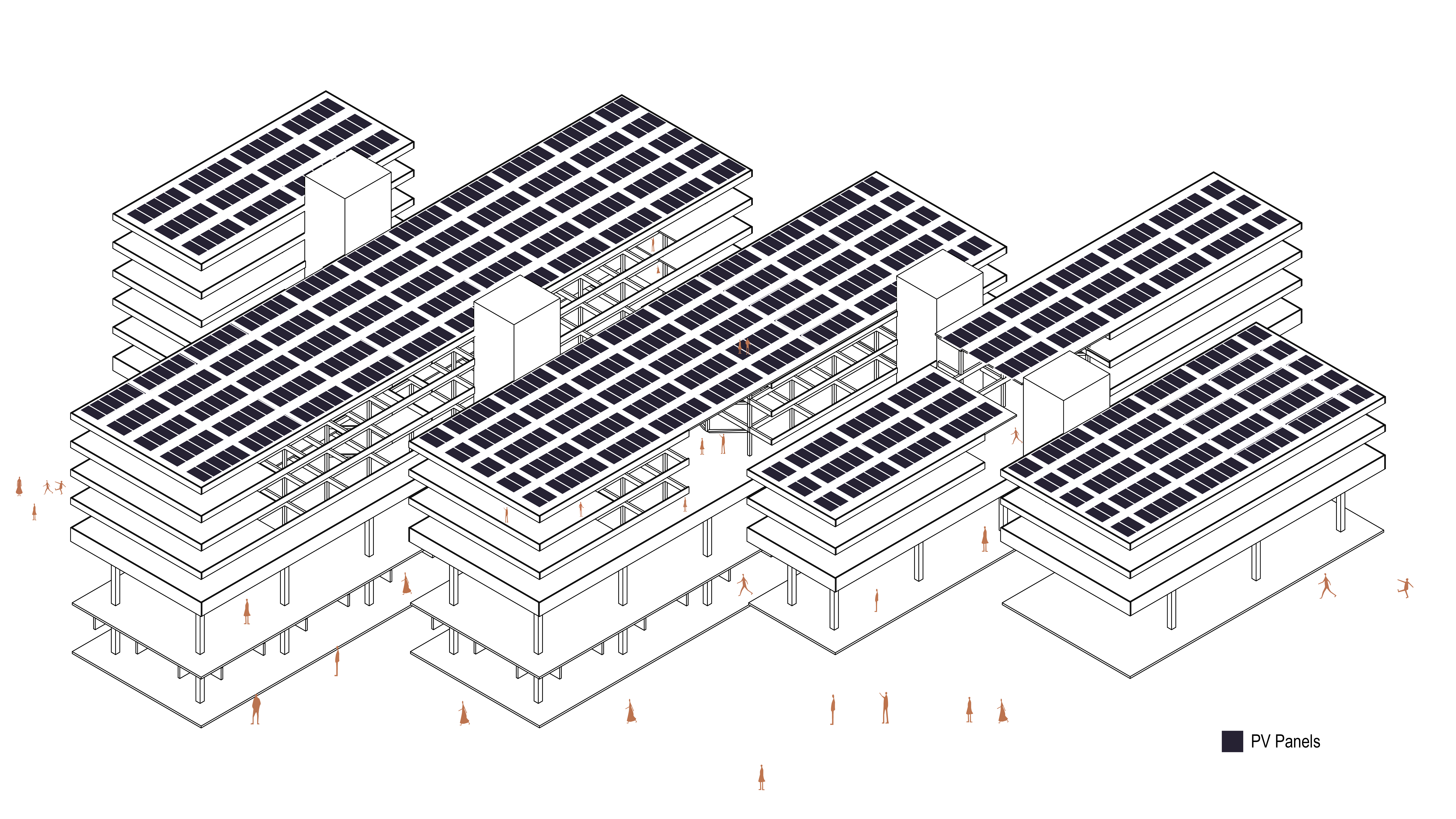The “Urban Alliance” is a mixed-use architectural design seamlessly integrating Industry 4.0 principles, featuring advanced photovoltaic production units. This visionary space harmoniously combines sustainable energy practices with residential and commercial areas, embodying a forward-thinking urban landscape that fosters eco-friendly living and innovative business practices. It exemplifies a holistic and tech-driven approach to urban planning. The project is located in Sant Adrià de Besos, Barcelona. Sant Adrià de Besos is predominantly an industrial zone with minimal high-rise buildings placed in its context, as well as scarce natural vegetation. The aim of the Metabolic Building Systems – Energy course is to generate energy, mainly through PV panels, in order to achieve a self-sufficient building.
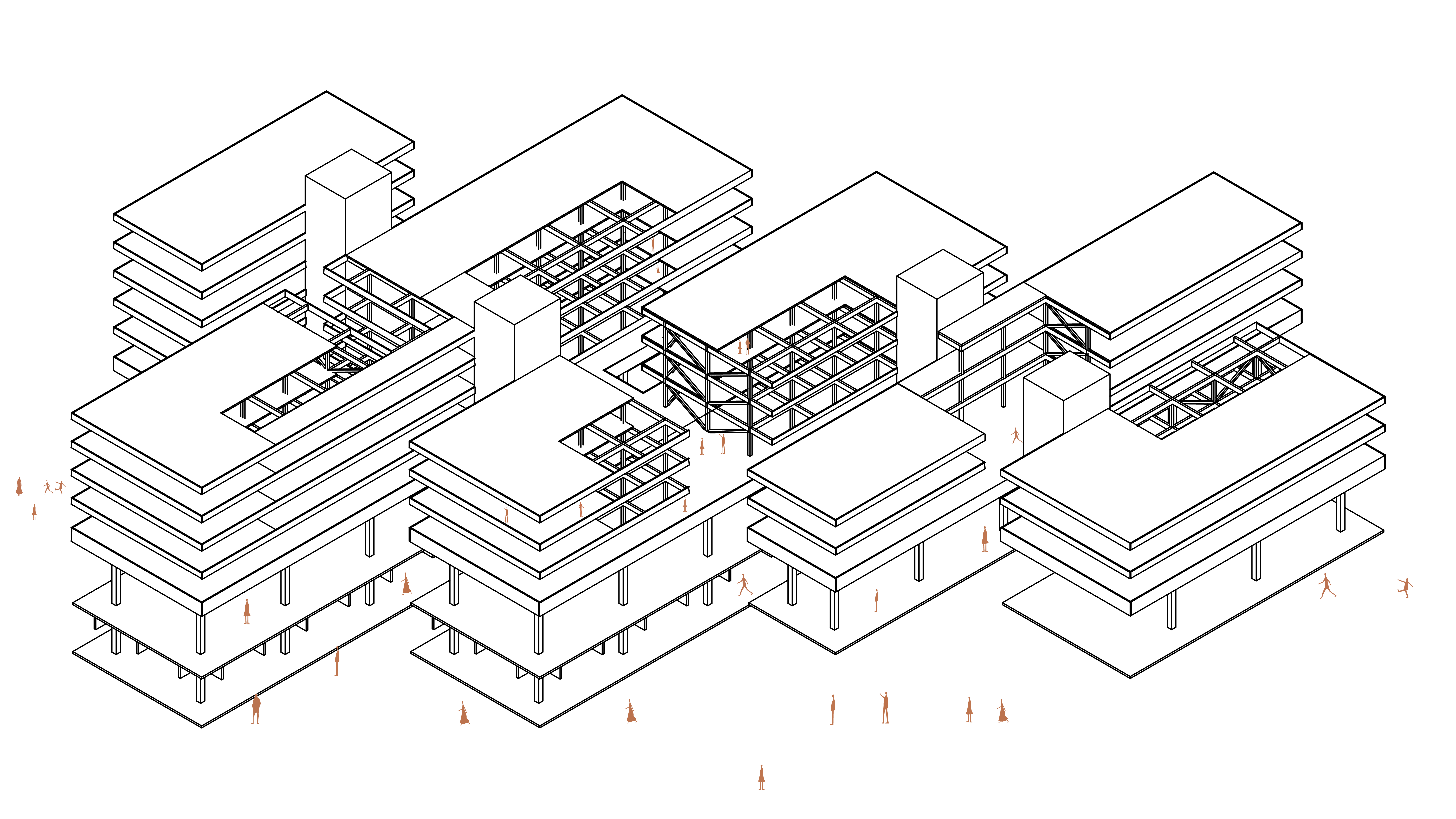
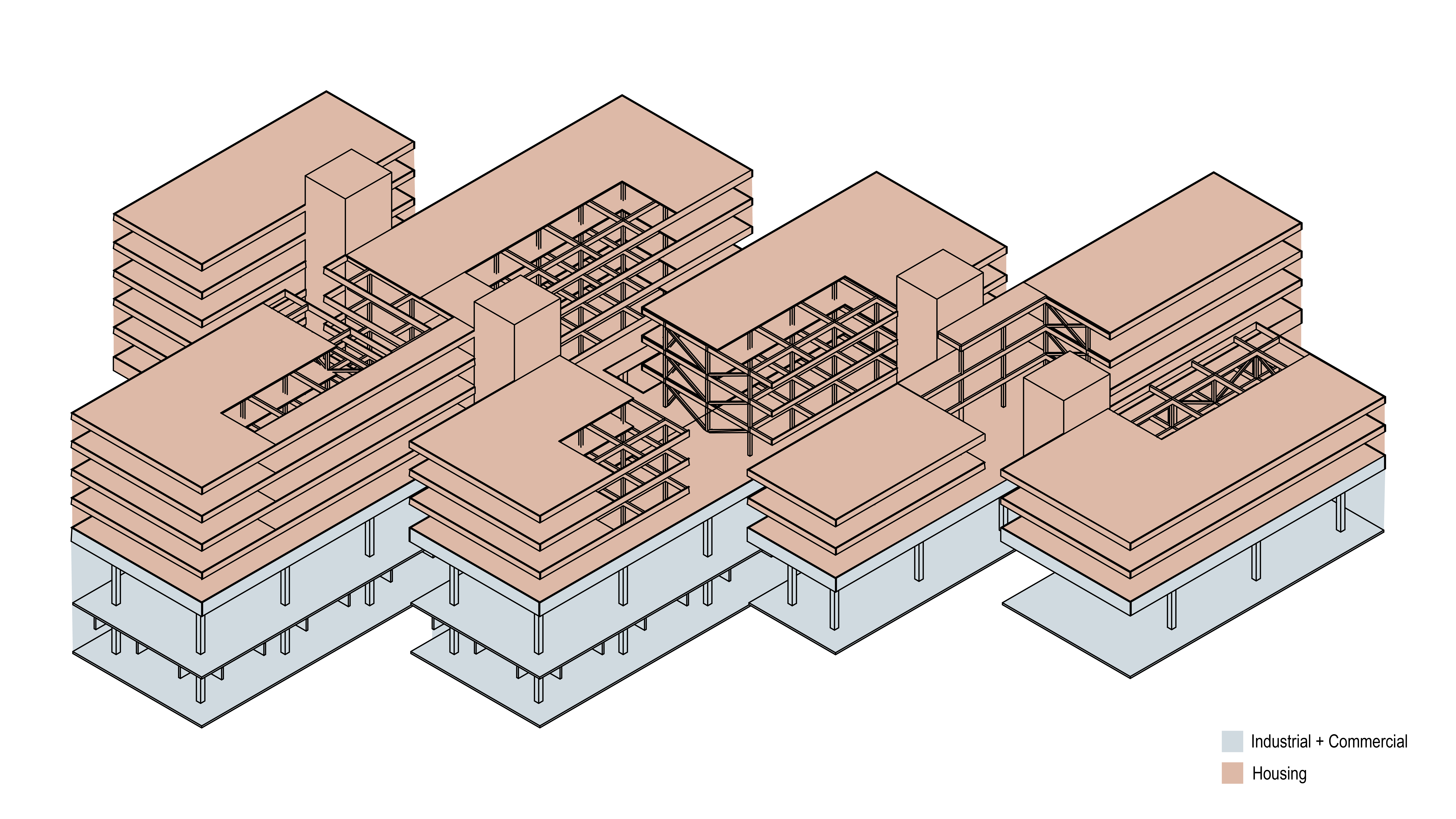
ENERGY CONSUMPTION
First, the demand for energy was calculated. To do so, the annual energy consumption was calculated based on the area and values pre-determined by the Summary of major fuel consumption totals and gross energy intensities by building activity subcategories, 2018. The daily peak hours were also estimated, considering the expected activities for each sector of the building.
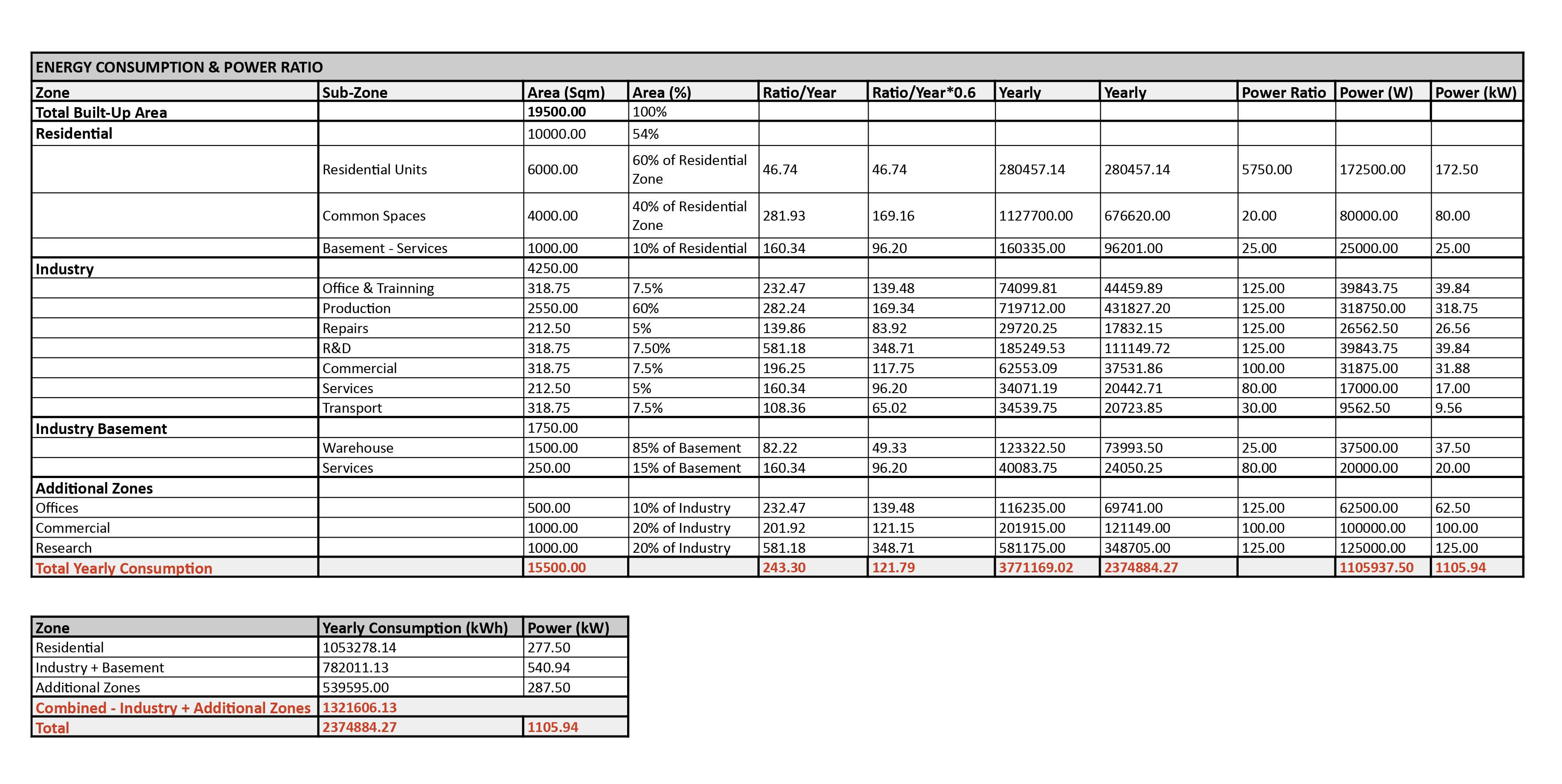

PV PANELS
Then, the energy consumption was loaded into the Sunny Design Program, a general overview of the buildings was created and PV panels were selected.
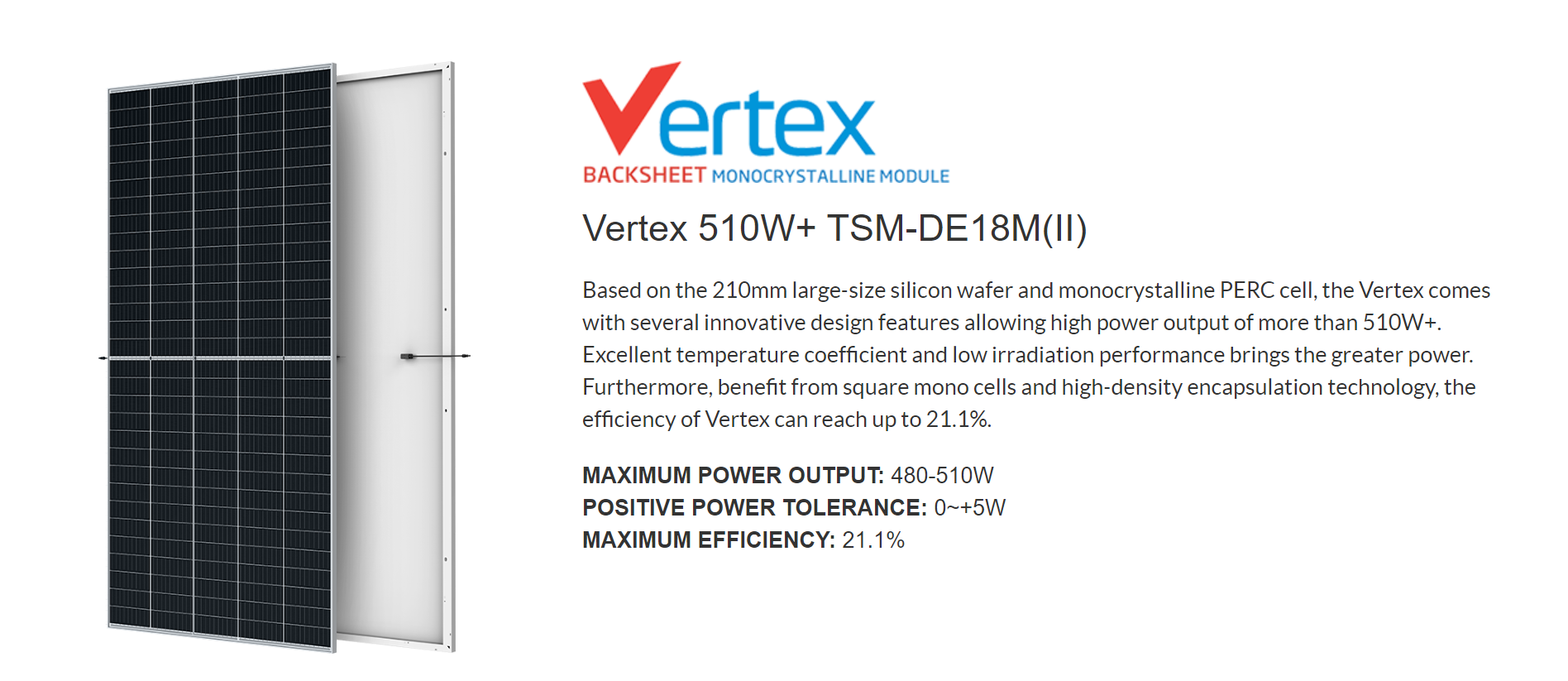
LAYOUT PV PANELS
Finally, the PV panels layout was designed, placing them facing south and parallel aligned to the longest edge of the building. The panels have an inclination of 20° and a minimum distance of 1.03m between them. This dimension was dimensioned according to the following calculations.
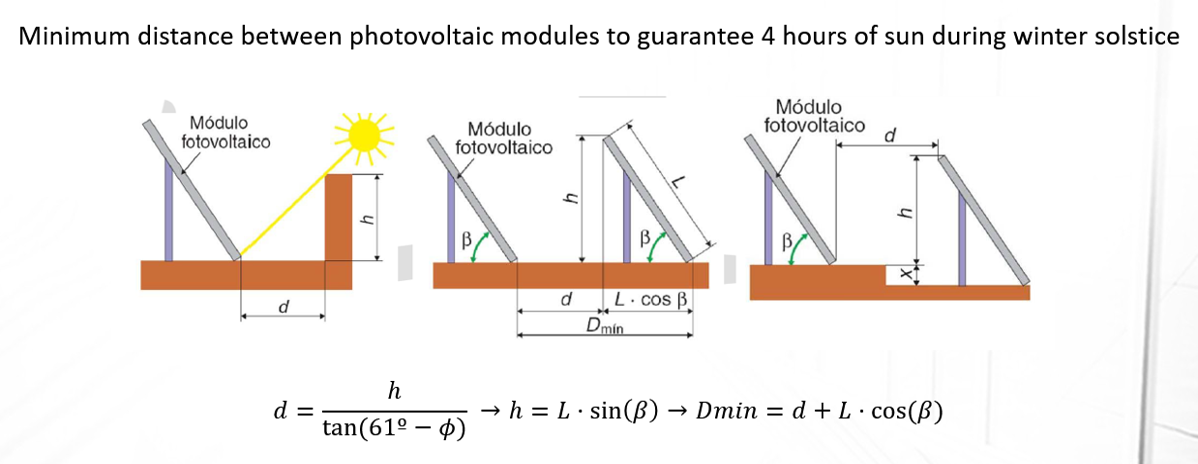
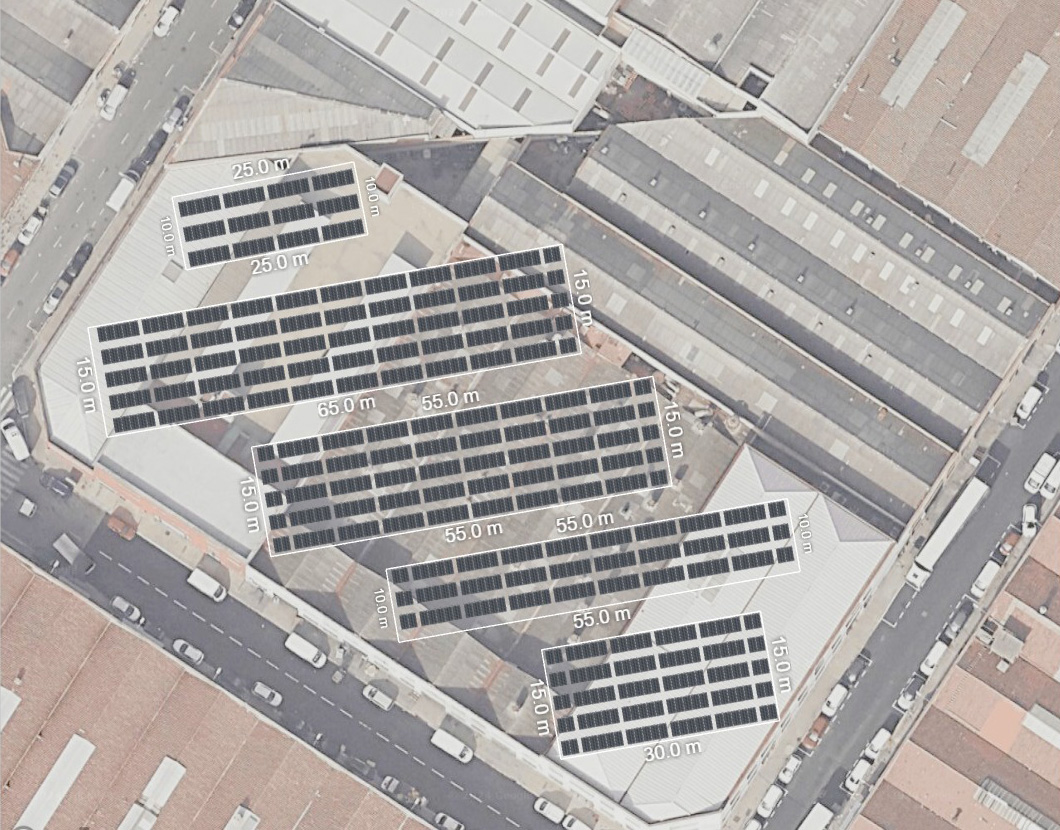
RESULTS
According to the Sunny Design Program, the building reached a 21.3% self-sufficient quota and 94.3% self-consumption quota. In order to improve the self-sufficient quota, some measures can be taken, such as considering different energy production systems (wind), reviewing the energy consumption and daily peak hours, and considering batteries in the design of the building to store the excess energy produced.
